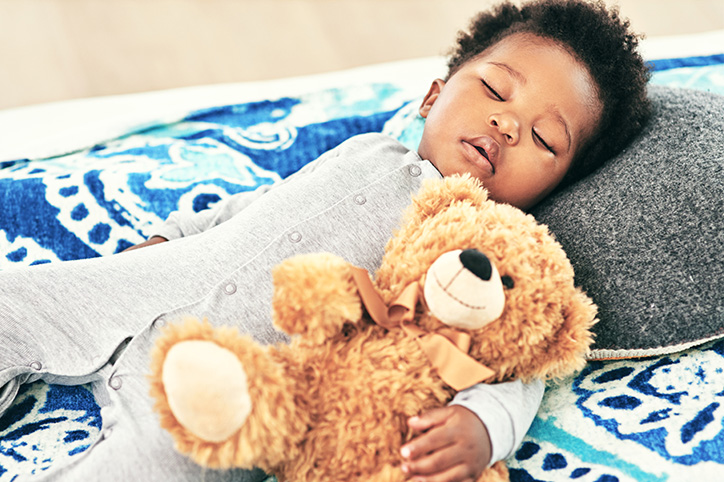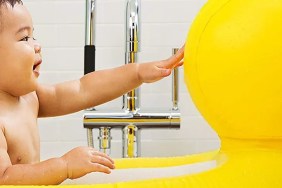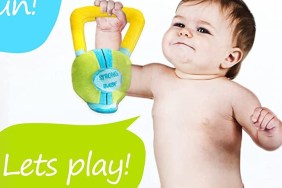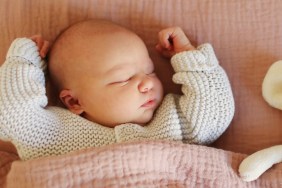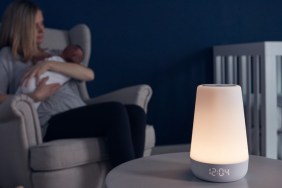Being a new parent involves learning a whole new vocabulary. Case in point: lovey. Before having your baby shower or Googling baby essentials, ‘lovey’ was probably not a term you were familiar with and yet once you are in the throws of new parenthood it often quickly becomes as familiar to a caregiver as ‘rattle’ or ‘pacifier.’
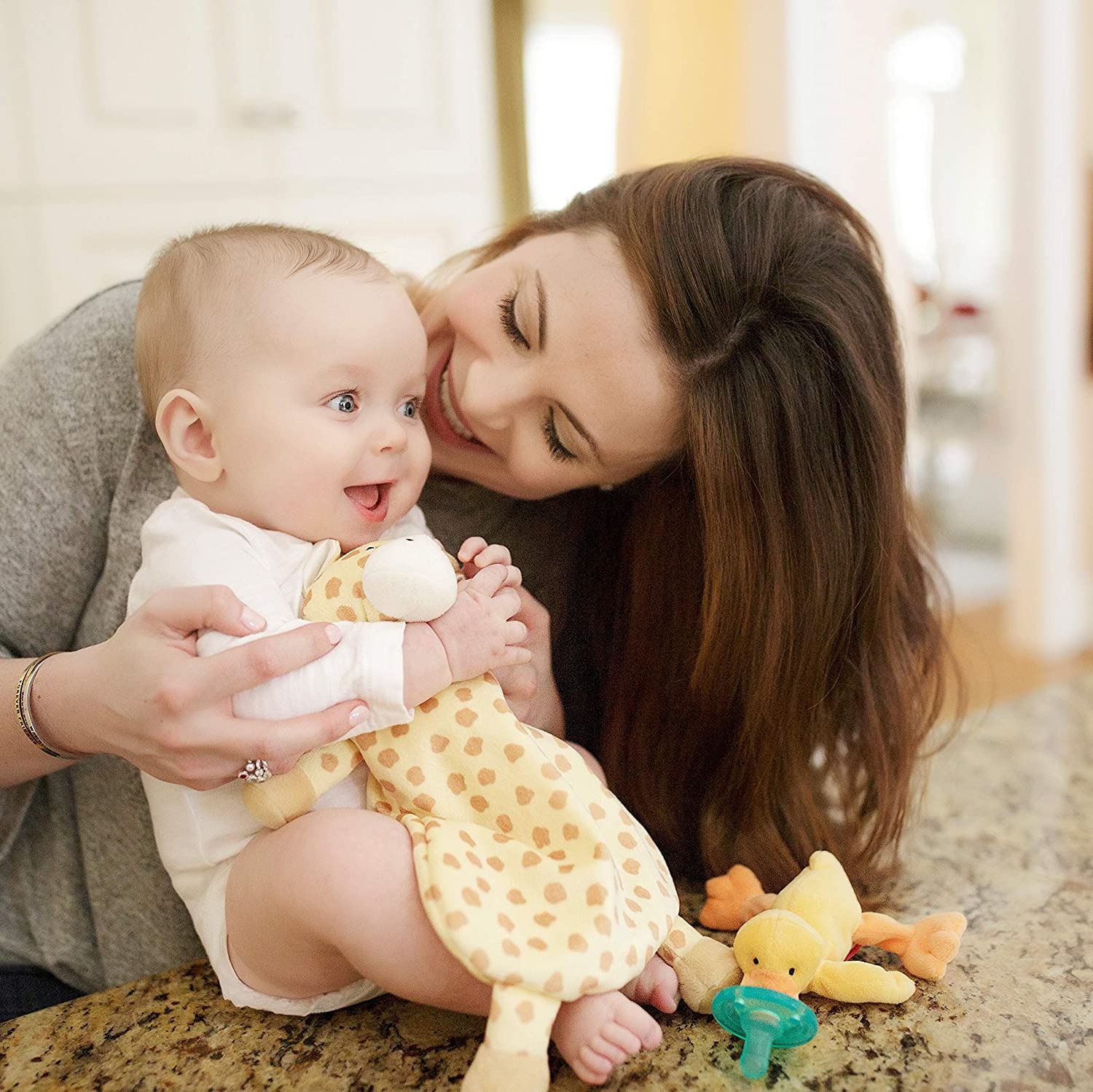
In short, a lovey is a an object – typically a plush toy, doll or blanket – that a baby or toddler bonds with in order to feel comforted and secure. That expression “security blanket” doesn’t come out of nowhere!
Wubbanub, pictured above, makes some of the most adorable ones, which coordinate with their popular pacifiers. Lulla doll (pictured below) is another very popular option designed specifically to sooth a wide age range from preemies and babies to toddlers and beyond. The doll imitates closeness to a caregiver at rest with its soft feel and soothing sounds of real-life breathing and heartbeat. Lulla plays sound for 12 hours. Keep in mind, however, that while it may be tempting for you to let your baby sleep with a special toy or blanket like Lulla, for safe sleep there should be nothing in the crib/bassinet besides baby until the age of 12 months – remove all plush toys, plush toys attached to pacifiers, toys, stuffed animals, decorative items and loveys.
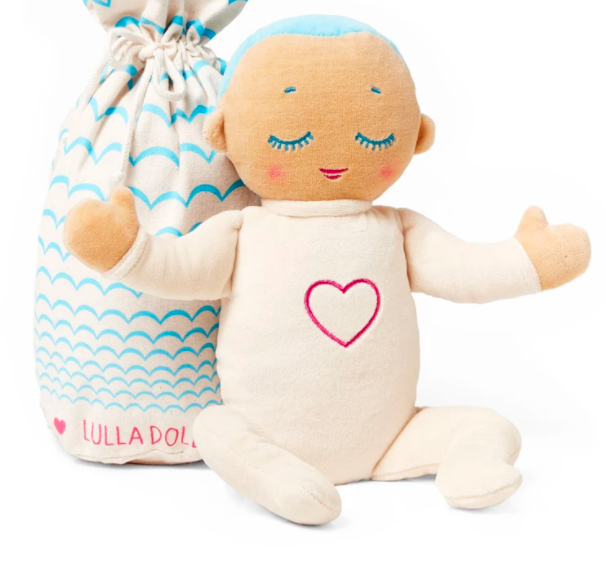
If you’re worried that a lovey will create a crutch for your child – don’t. Pediatrician Dr. Harvey Karp notes that loveys help babies build confidence and security. “A lovey is a very, very good habit—and it’s especially comforting during times of stress (like an illness or a parent’s absence) and for babies with cautious, sensitive temperaments.” Dr. Karp reiterated that for the first 12 months nothing should be in the crib besides your baby, with the exception of a pacifier if you so choose, and a white noise machine (which he calls “an auditory lovey” that can be placed near the crib but out of reach of baby). Once your baby is about a year old, however, you can safely let them sleep with their lovey.
Make sure that you have a backup or that you could easily buy a duplicate should your child lose his or her lovey. “Losing a lovey is traumatic for a child,” says Dr. Karp. “Every couple of weeks, rotate your baby’s two loveys. That allows you to keep them clean and to have them both develop the same comforting feel and smell. And also make sure your baby’s lovey doesn’t have any little pieces (like button eyes or beads in the stuffing) that can be a choking risk or get stuck up the nose.” Dr. Karp’s SNOObear (pictured below) is a lovey that also has responsive white noise, making it a great option to help your baby fall asleep.
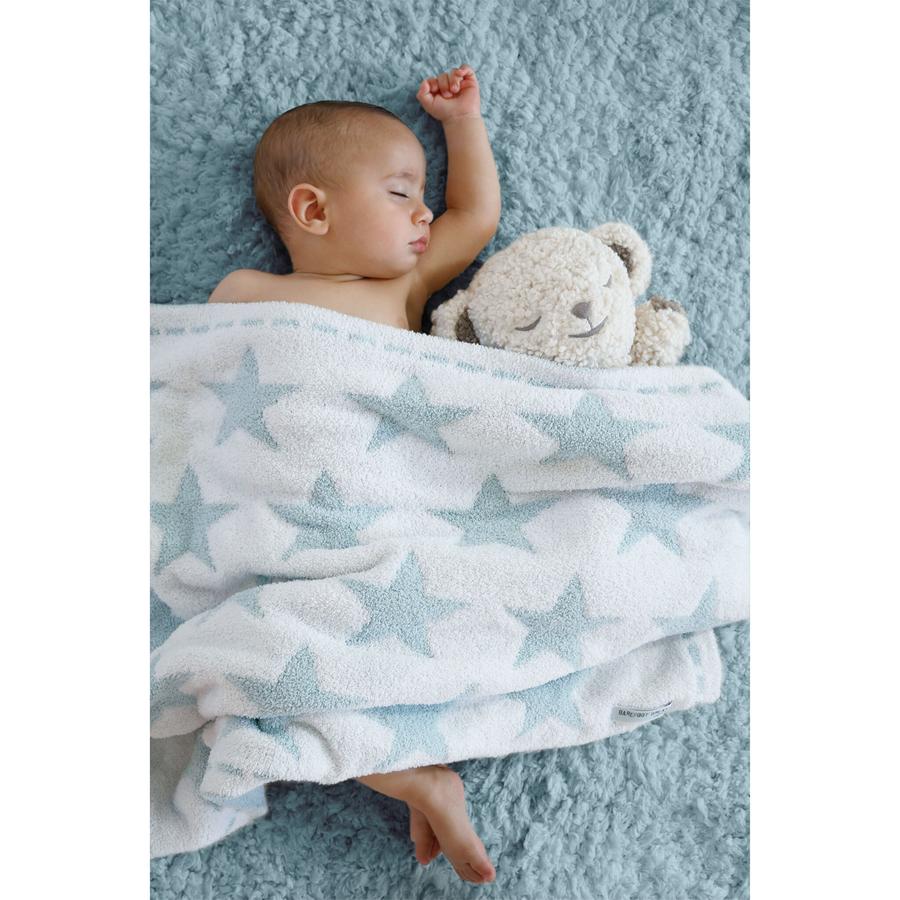
No matter which lovey you opt to give your child, Dr. Karp suggests making it smell like you. “Have Mom or Dad wear or hold the lovey for at least an hour prior to handing it to your baby. Scent can be soothing for your child and it creates the illusion that their parent is right there.” Lastly, he suggests to optimize efficacy, make the lovey a part of the nap routine or keep it strictly in the crib.
